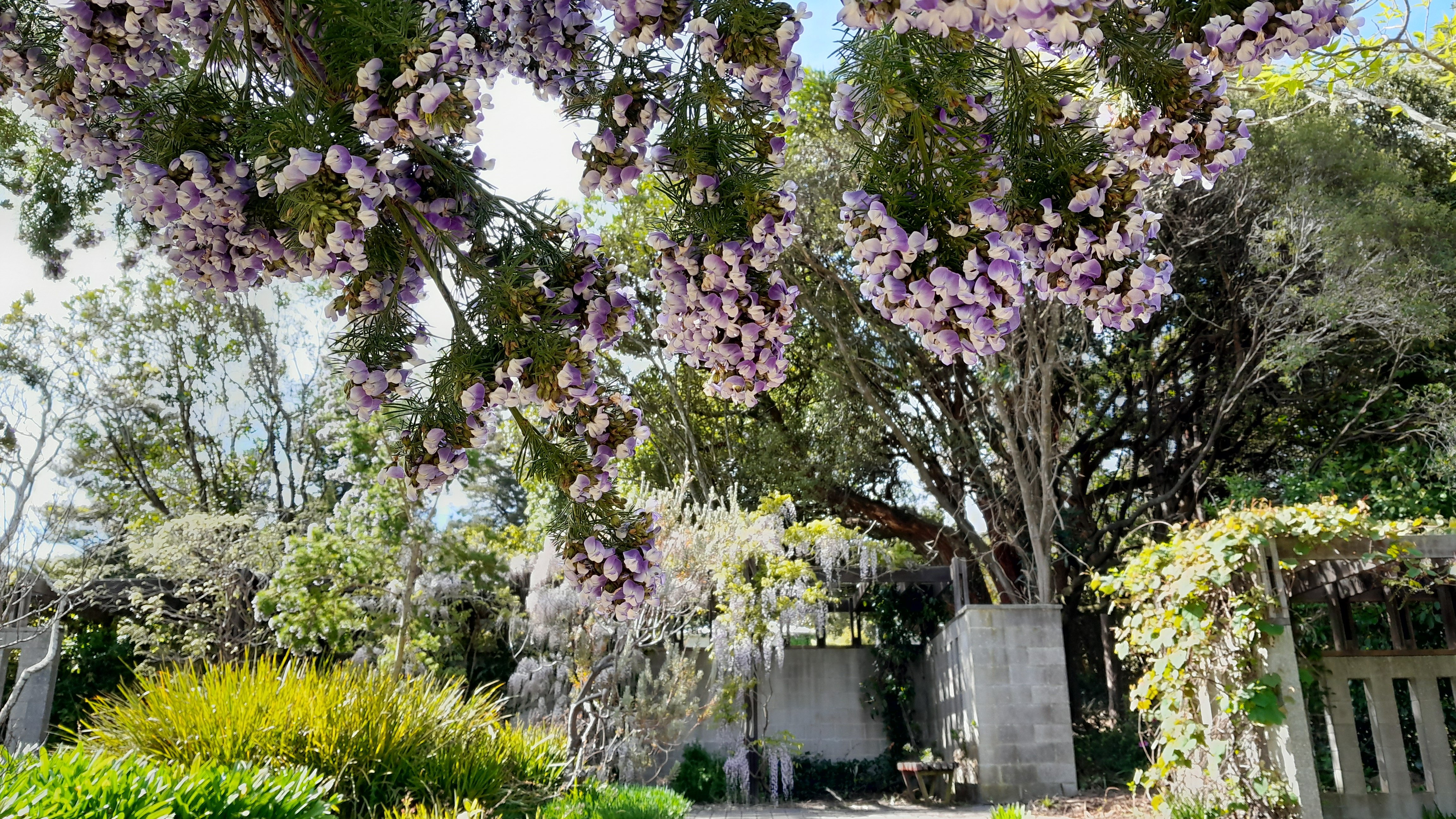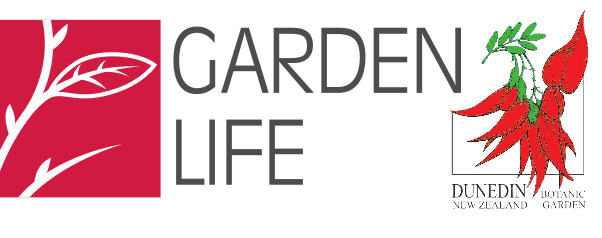
The hint is in the name of the nut - these are all plants from the Fabaceae family, commonly known as the pea or legume family, a large and diverse group of flowering plants.
Fabaceae flowers commonly have an irregular structure with a large upper petal (the ‘‘banner’’), two smaller side petals (‘‘wings’’) and a ‘‘keel’’ formed from two fused lower petals.
Leaves often are made up of many small leaftlets arranged in two rows, fruit is characteristically a pod, and many Fabaceae plants have a special nitrogen fixing ability, meaning they can convert nitrogen in the air into a form the plant can use via specialised root nodules.
Check out our legume border in our native plant collection to see some lovely examples of New Zealand’s Fabaceae plants such as previously mentioned kōwhai (Sophora), and kākā beak (Clianthus) alongside native broom species (Carmichaelia).
At this time of year my eye is particularly drawn to purple Fabaceae flowers, especially wisteria which comes into bloom mid spring.
Wisteria viewing spots here at the gardens are the entrance to Otaru Teien and the bridge near the Water Garden.
I think the Pergola Garden takes the cake though, supporting beautiful blooms of the Japanese Wisteria floribunda ‘Kuchi-beni’, sold locally as ‘Peaches and Cream' or ‘Lipstick'.
Even better, adjacent to this spot in the South African garden, more purple toned beauties, Psoralea pinnata (blue pea) are now covered in similarly sweetly scented pea flowers. These evergreen shrubs have a long flowering window, but if you can catch them flowing alongside the wisteria, it’s an extra lovely sight!













